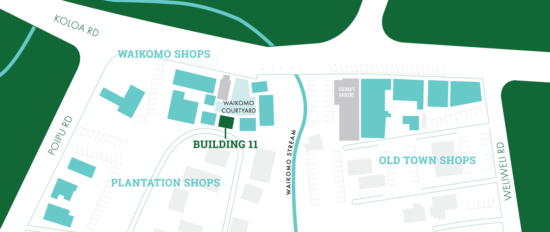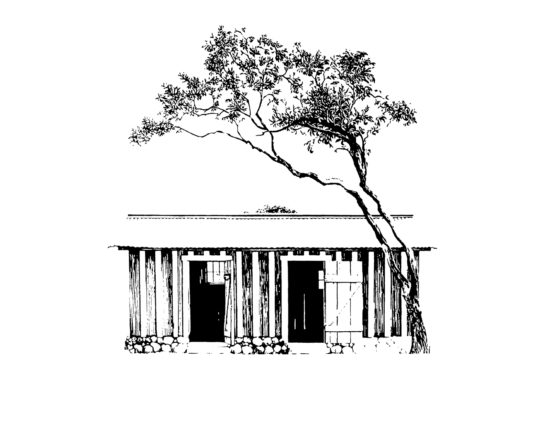The Kōloa Hotel O-Furo
Building 11Originally located on the bank of what is now the Waikomo Stream, the hotel o-furo was built for use by its mostly Japanese guests. The charcoal-heated bath tub was housed in a separate shed to prevent any accidental fires from spreading and the building also held a laundry washroom. Culturally, the Japanese enjoyed relaxing soaks in the o-furo, scrubbing and rinsing themselves first to make sure they would keep the soaking water clean when they entered the neck-high hot tub.

Originally located on the bank of what is now the Waikomo Stream, the hotel o-furo was built for use by its mostly Japanese guests. The charcoal-heated bath tub was housed in a separate shed to prevent any accidental fires from spreading and the building also held a laundry washroom. Culturally, the Japanese enjoyed relaxing soaks in the o-furo, scrubbing and rinsing themselves first to make sure they would keep the soaking water clean when they entered the neck-high hot tub.
Field workers, as much as travelers, enjoyed a soak in an o-furo, but having a tub at home meant a lot of work for family members. This excerpt from Return to Mahaulepu by Charles Tanimoto, explains the situation: “Since there was enough manpower in our household (seven females and five males), there should have been no problem in carting enough water for the furo baths. Getting the water for the bath also included the scouring of the bath tub. These were the chores we detested most. There was constant bickering among us as to who would get the water. After the tub was scoured and refilled with clean water, there was more argument because no one liked to tend to the fire to heat the tub. The fire was fueled by kindling wood which was gathered from the fields surrounding our farm.”
The luxury of a clean, hot tub meant a great deal in the era of manual labor, signifying refinements and pleasures unusual in a country setting.

